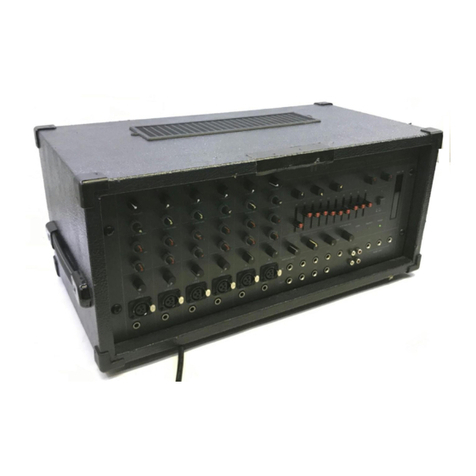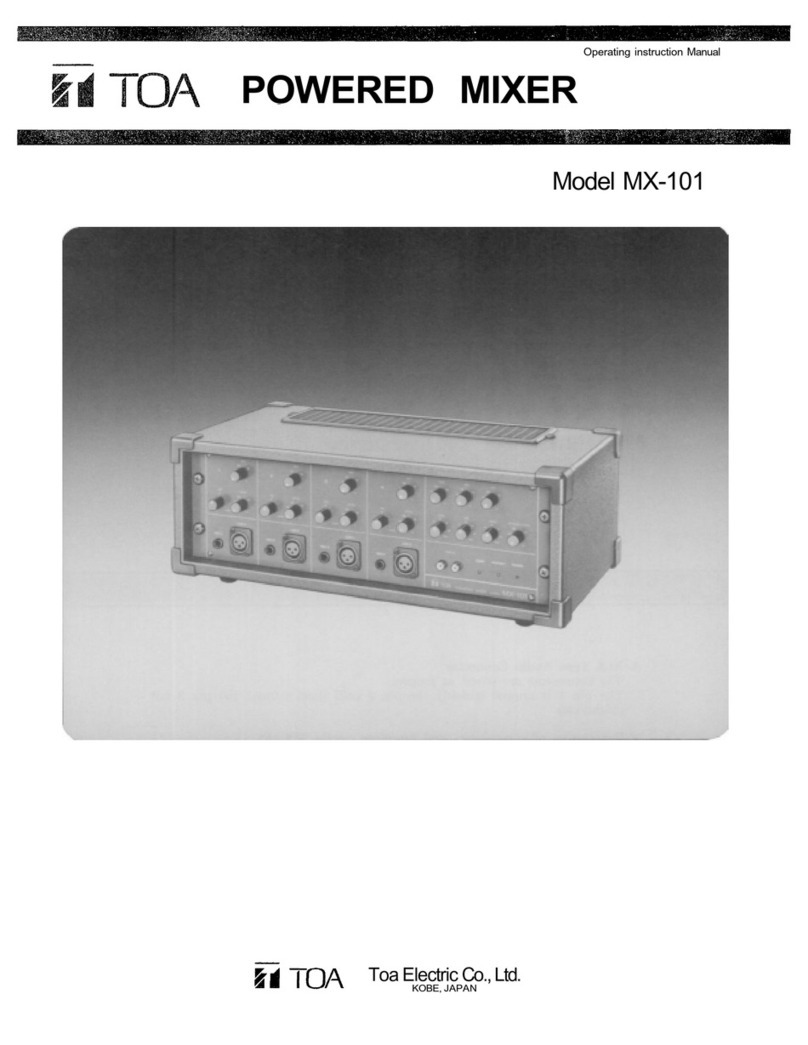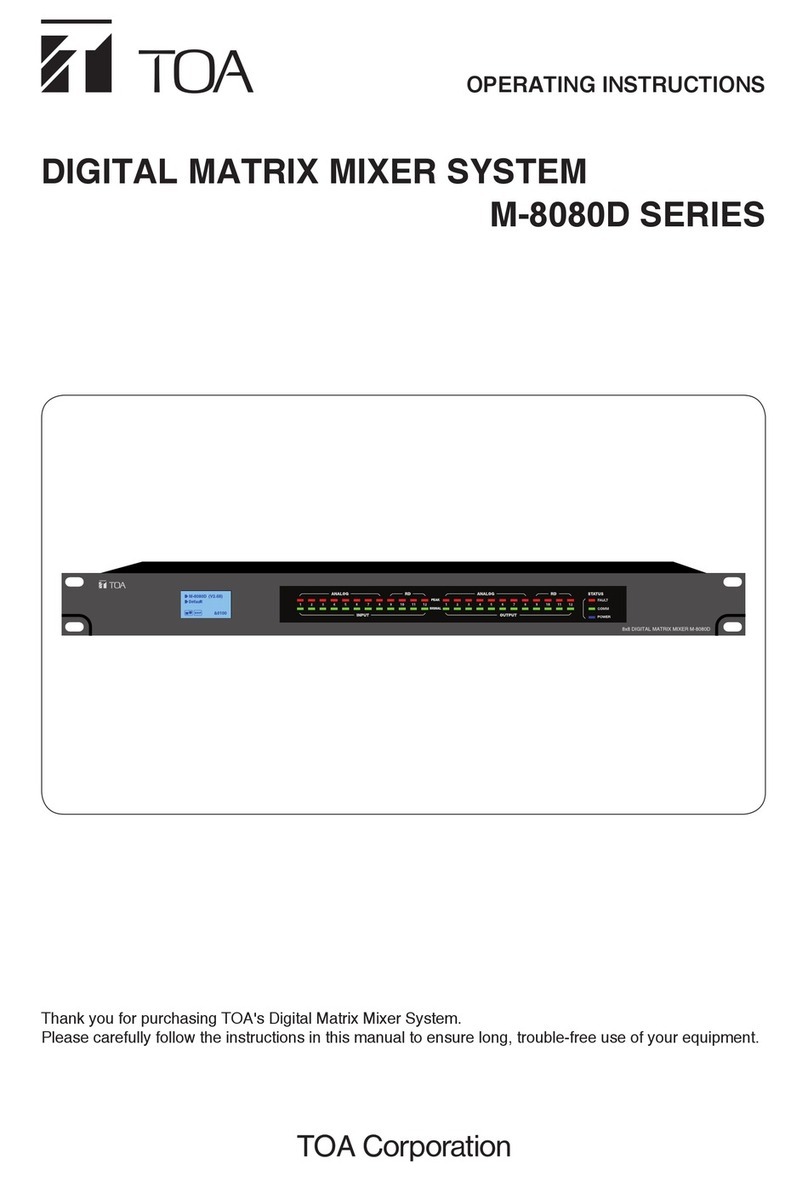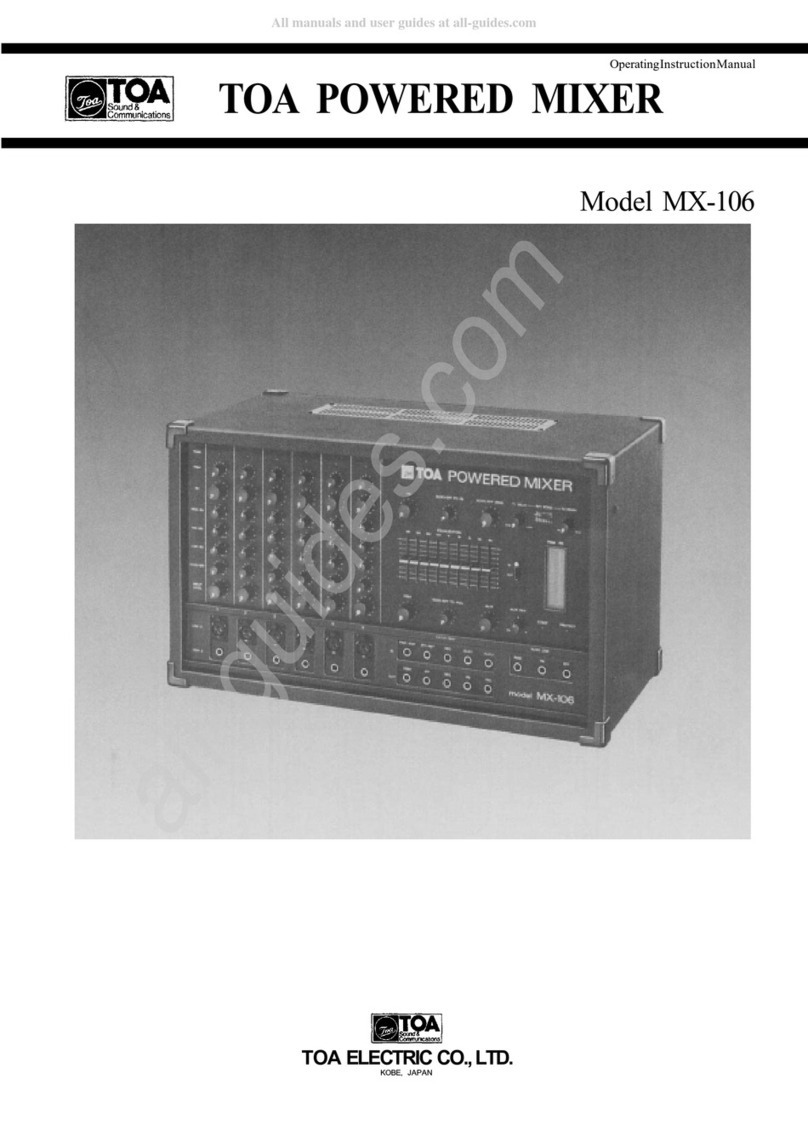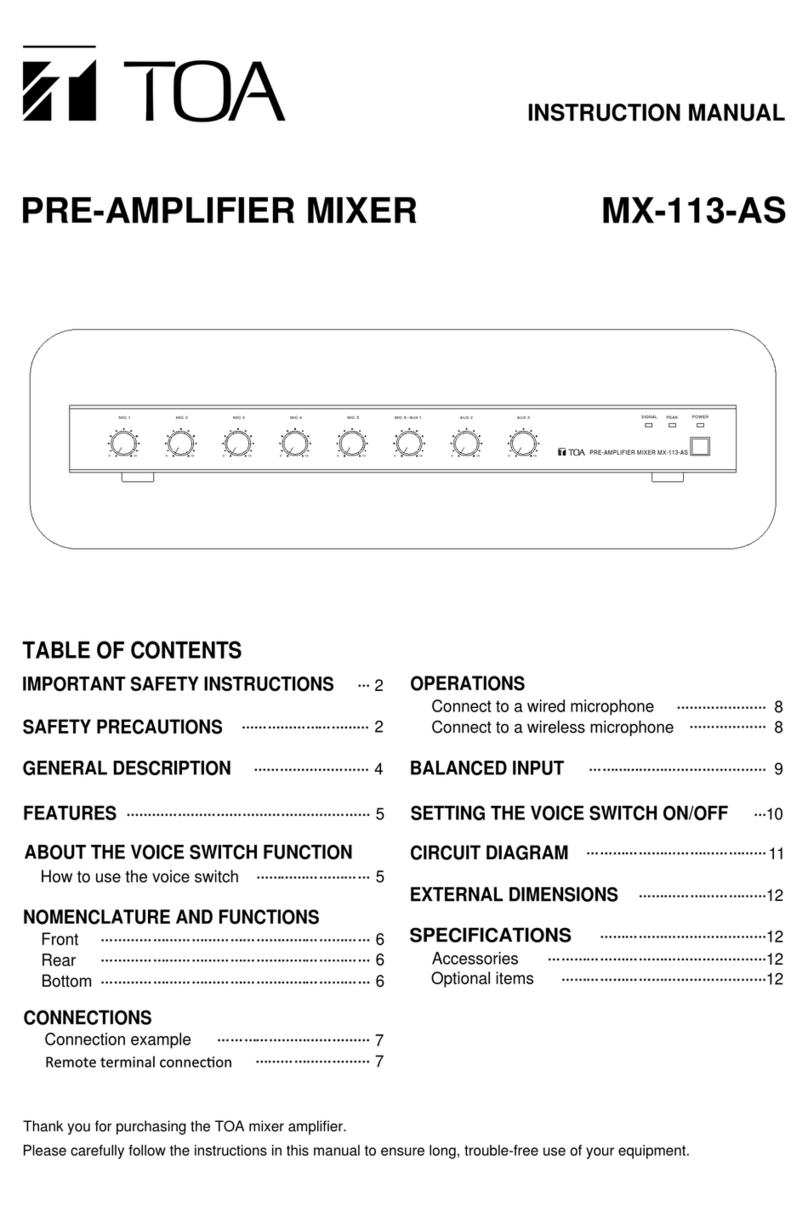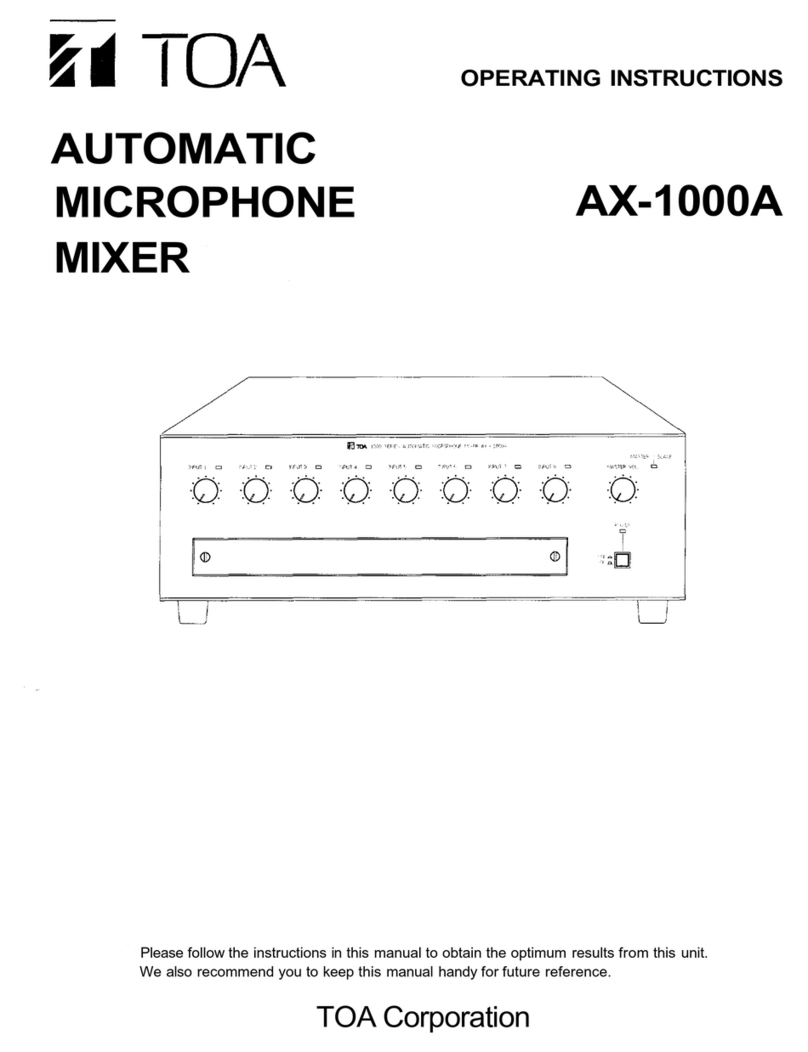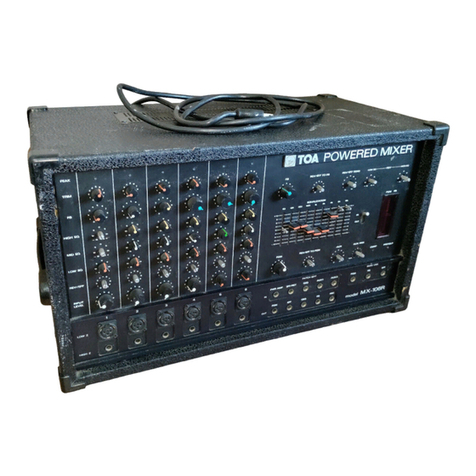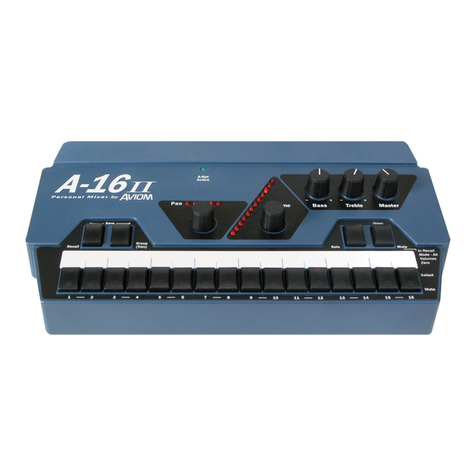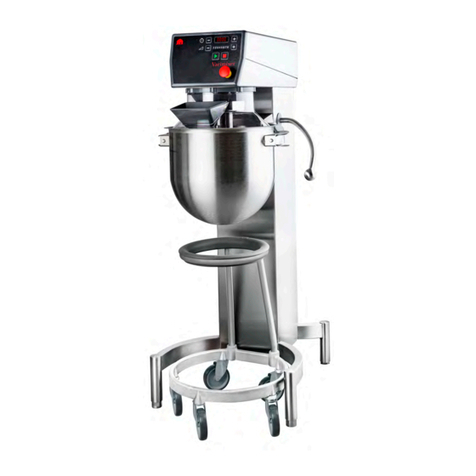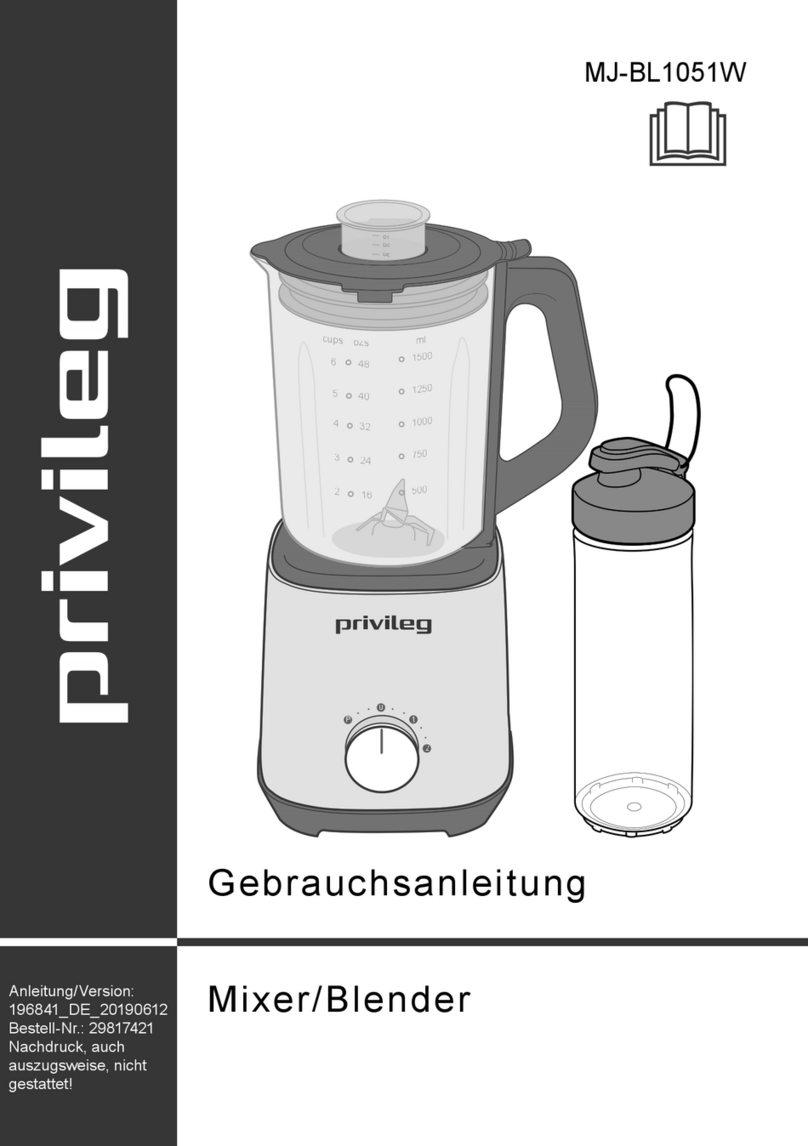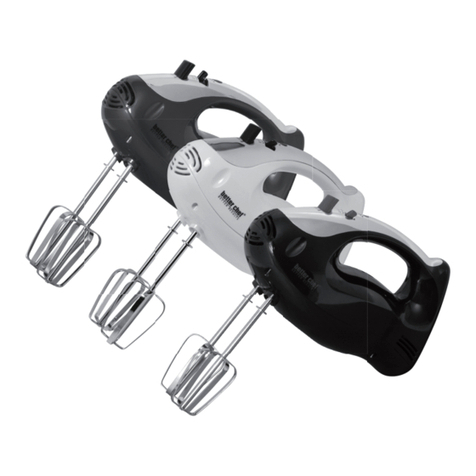
MIDI Thru Connectors
(MIDI THRU)
The MIDI signal from the MIDI Input
connector (MIDI IN) is split and sent
unaltered to the four MIDI Thru
connectors on the D-4, and to four
more MIDI Thru connectors on the
D-4E, if used. Each of the MIDI Thru
jacks can be connected to a different
synthesizer's MIDI Input jack, allow-
ing one MIDI keyboard or sequencer
to control up to four other MIDI
synths (eight when using the D-4E.)
Earth Terminal
(PUT EARTH SYMBOL HERE)
This terminal can be used to ground
other devices to the D-4 to reduce
hum and shock hazard.
AC Power Cord
The power cord is of the three-wire
type with proper grounding facili-
ties built-in.
Accessory Switched AC outlet
This is an accessory AC outlet that is
turned on and off via the D-4's
Power Switch. Ideally it will be used
for the D-4E, allowing both units to
be powered up on the same switch,
but it will in fact handle any AC
equipment that consumes less than
400 watts.
Pushbutton Circuit Breaker
(PUSH RESET)
This breaker is designed to protect
the D-4 and D-4E in the event of
internal or external fault. Wait about
two minutes after correcting the
fault and push the button to reset the
system and restore proper operation.
Buss Link Connector (BUSS LINK)
This connector is used to link the
D-4 with the D-4E Expander. A
two-foot connecting cord is in-
cluded with the D-4E, and a six-foot
cord is optional (see your authorized
TOA dealer).
CAUTION – The ground pin on
the AC plug should not be re-
moved under any circumstances.
If the D-4 must be used on an AC
circuit with no ground or and
open ground, then a suitable
grounding adapter should be
used and its ground terminal
should be securely attached to a
good earth connection. Failure to
do so will result in increased
noise and shock hazard.
Sum Output Ground Lift Switch
(SUM
OUT
GND)
This switch is assigned to the XLR
Sum Output connector, and is used
to avoid ground loops and induced
hum that sometimes occur when
connecting the D-4's XLR Sum Out-
put with other equipment. Sliding
the Ground Lift Switch from the
NORMAL position to the LIFT posi-
tion breaks the ground connection
and may reduce hum and noise. For
most applications the which should
be left in the NORMAL position.
Stereo L&R AccessoryInput and
Output Jacks (ST L and ST R, ACC
IN and
OUT)
These RCA pin jacks are unba-
lanced, with a nominal level of
-10dB. Input jack impedance is 10k
ohms, and output jack impedance is
1k ohms. The Accessory jacks allow
signal processing and effect devices
to be inserted into the signal path,
the regular signal path is interrupted
when a plug is inserted into the
Accessory In jack (ACC IN).
MIDI Input DIN Connector
(MIDI IN)
This connector will accept the MIDI
output of any synthesizer, se-
quencer, or other MIDI device. Use
of non-MIDI-standard DIN cables, or
of cables longer than 5m (16'5") may
result in improper operation and
data loss.
Direct Output (DIRECT OUT)
The Direct Output on each channel
utilizes an unbalanced RCA pin jack
with an impedance of 1k ohms and a
level of – 10dB. The Direct Output is
post-EQ/post-fader, and is useful for
recording and for sending indi-
vidual instruments to a main PA
mixer through direct boxes.
Sum Accessory Input and Output
(SUM
OUT,
ACC IN and ACC
OUT)
These RCA pm jacks are unba-
lanced, with a nominal level of
–10dB. Input jack impedance is 10k
ohms, and output jack impedance is
1k ohms. The Accessory jacks allow
signal processing and effect devices
to be inserted into the signal path.
The regular signal path is inter-
rupted when a plug is inserted into
the Accessory In jack (ACC IN).
Aux Send Jack (AUX SEND)
This 1/4" phone jack can be used
either as a monitor send, or in
conjunction with the Aux Return
jack to connect an outboard effects
device (ie., delay or reverb) to the
D-4. The Effect Send |ack should be
connected to the input of the effect.
Nominal output level is –10dB with
an impedance of 1k ohms.
Sum Output Jacks
(SUM OUT, OUTPUT)
The electronically balanced XLR
and unbalanced 1/4" phone are
wired in parallel. The XLR jack has a
nominal output level of +4dB and
an impedance of 150 ohms, while
the 1/4" jack has a nominal output
level of +4dB and an impedance of
1k ohms. These jacks may be used
simultaneously.
Stereo L&R Output Jacks
(ST L and ST R OUTPUT)
The unbalanced RCA pin jacks and
1/4" phone jacks are wired in para-
llel. The RCA jack has a nominal
output level of –10dB and an impe-
dance of 1k ohms, while the 1/4" jack
has a nominal output level of +4dB
and an impedance of 1k ohms. The
jacks may be used simultaneously.
Effect Return Jack (EFF RET)
This 1/4" phone jack is used in
conjunction with the Effect Send
jack to connect an outboard effects
device (ie., delay or reverb) to the
D-4. The Effect Return jack should
be connected to the output of the
effect. Nominal input level is -20dB
with an impedance of 10k ohms.
Aux Return Jack (AUX RET)
This 1/4" phone jack can be used in
conjunction with the Aux Send jack
to connect an outboard effects de-
vice (ie., delay or reverb) to the D-4.
The Aux Return jack should be
connected to the output of the effect.
Nominal input level is -20dB with
an impedance of 10k ohms.
Sum Input Jack (SUM IN)
This 1/4" phone jack is directly
connected to the mono Sum buss. Its
nominal input level is –10dB, with
an input impedance of 10k ohms.
Input Channel Accessory Input and
Output (ACC IN and ACC OUT)
These RCA pin Jacks are unba-
lanced, with a nominal level of
–10dB. Input jack impedance is 10k
ohms, and output jack impedance is
1k ohms. The Accessory jacks allow
signal processing and effect devices
to be inserted into the signal path
The regular signal path is inter-
rupted when a plug is inserted into
the Accessory In jack (ACC IN).
RCA Channel Input (INPUT)
The RCA pin input jack is unba-
lanced, with an impedance of 50k
ohms, and accepts input sources
from –30dB to +4dB. Proper adjust-
ment of both Trim control (TRIM)
and Input Channel Level (LEVEL/
PAN) control will insure optimum
signal-to-noise ratio and minimum
distortion.
1/4" Phone Channel Input (INPUT)
This |ack is a standard, unbalanced
1/4" phone jack, with an input impe-
dance of 50k ohms, and accepts
input sources from -30dB to +4dB.
Proper adjustment of both Trim con-
trol (TRIM) and Input Channels
Level (LEVEL/PAN) control will in-
sure optimum signal-to-noise ratio
and minimum distortion. When a
plug is inserted into the 1/4" input
jack, the corresponding RCA pin
jack is automatically switched out of
the input circuitry.
Phantom Power On/Off Switch
(PHANTOM)
This switch alternately turns "on"
and "off" the phantom power
(48VDC) for the XLR jack assigned to
Channel 4.
Balanced XLR Microphone Input
(CH4
MIC)
The XLR-type microphone input
connectors are assigned to Channels
4 on the D-4. and to Channels 5, 6, 7,
and 8 on the D-4E. They are electro-
nically balanced with an input im-
pedance of 1k ohms, and will accept
signals from –60dB to –26dB. Phan-
tom powering is provided for use
with condenser-type microphones
(see PHANTOM), and once again the
proper adjustment to both Trim con-
trol (TRIM) and Input Channel Level
(LEVEL/PAN) control will insure
optimum signal-to-noise ratio and
minimum distortion. The mic input
is automatically disconnected when
either the corresponding RCA or the
1/4" phone |ack is used.
Effect Send Jack (EFF SEND)
This 1/4" phone jack is used in
conjunction with the Effect Return
jack to connect an outboard effects
device (ie., delay or reverb) to the
D-4. The Effect Send jack should be
connected to the input of the Effect.
Nominal output level is –10dB with
an impedance of 1k ohms.
- 5 -
RearPanel (D-4)
